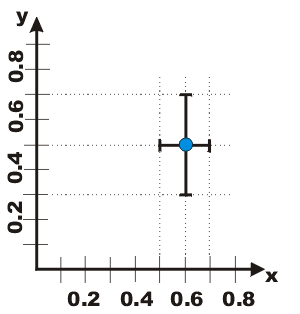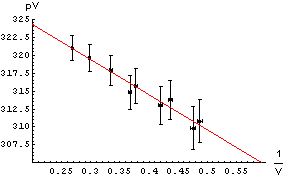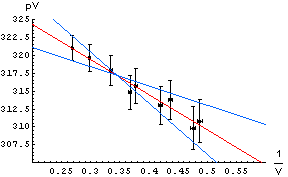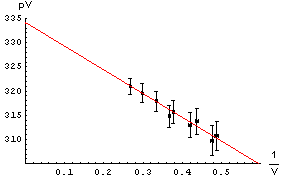|
To the right we show data used in the analysis of a Boyle's Law
experiment in the introductory Physics laboratory at the University of
Toronto. Note the error bars on the graph. Instead of using a computer
to fit the data, we may simply take a straight edge and a sharp pencil
and simply draw the line that best goes through data points, as shown.
Note we have used a red pencil.
Recall that the slope is defined as the change in the dependent
variable, pV in this case, divided by the change in the independent
variable, 1/V in this case. The intercept is defined as the value of
the dependent variable when the independent variable is equal to zero. In the
graph to the right, the point where the independent variable is equal to zero
is not shown.
From the drawn line we can calculate that the intercept is 334 and
the slope is -49. |




